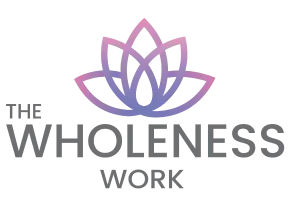The Wholeness Work:
An Interview on The Wholeness Work Method And The German Book Edition with Its Founder And Author Dr. Connirae Andreas
Interview by Dr. Ludger Brüning
Originally published on the DVNLP website in German.
Ludger Brüning (LB): You were still a graduate student in a PhD program in clinical psychology when you found out about a new approach which was still on its way to be established and get its name. What made you start with NLP – and stay in the field?
Connirae Andreas (CA): It was exciting to learn about NLP in 1977, because this new field was clearly a paradigm shift for the field of therapy and personal growth. Traditional “talk therapy” was based on content, and didn’t have reliable procedures for creating change. In contrast, NLP focuses on discovering the “structure” of our experience. For example, if someone feels unworthy, how do they do it? What sequence of inner experience do they go through in the present moment to get to the unworthy feeling? It might be that they see an image of a parent frowning at them, then hear the parent saying “You always mess up!” and then feel bad. NLP offers precise and specific ways to create change, which we can test immediately to find out if the change has taken effect or not. And it is about sensory-based experience rather than concepts. The practitioner is trained to observe non-verbal cues which help in understanding the client’s experience.
I continue to appreciate these things.
LB: You call your new work, “The Wholeness Work.” What does “Wholeness” mean in this context; is it a physical perception, a cognitive understanding, a mental form of being or a spiritual level, or a mixture of all of these?
CA: The Wholeness work comes from modeling a key Eastern spiritual teaching, that enlightenment or “awakening” happens when we let go of the ego. If we read spiritual teachings, “awakening” sounds like something very mysterious. The Wholeness Work makes this something that can be accessed by everyone by following simple, yet precise and specific, steps.I chose the name “the Wholeness Work” because I wanted a name that sounds ordinary, and “Wholeness” fits. We literally become more “whole” as we do this work. We begin the work by finding and dissolving the most fundamental inner division each of us has—the unconscious structure of the ego. Then the work goes beyond this to find other inner divisions that are universal in human consciousness. The results are both profound—and ordinary.
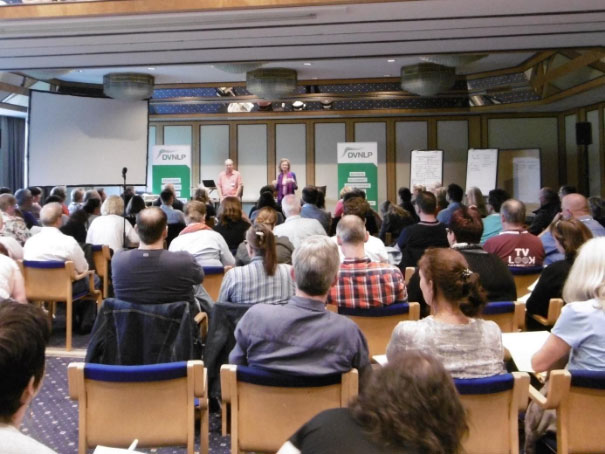
Connirae and her interpreter Ralph Köbler at the Future Tools Workshop in Göttingen (Germany), in 2017. Photos Dr. Ludger Brüning
This work changes us on all of the levels you describe. People experience a visceral shift in how the body feels, and they describe a clearing of the mind. It’s common for people to say “the air literally seems clearer now.”
LB: For some people, questions of spirituality might be very helpful, others might be reluctant. Can you use the method as a tool for coaching or self-coaching without spiritual curiosity or intention, too?
CA: Yes, absolutely. The Wholeness Work is about actual experience, not about belief systems. So you don’t need any spiritual beliefs
or even interest to benefit.It’s like matches. Anyone can use a match to start a fire. The process can seem like magic if not understood, but we don’t need to believe in magic to use a match.
LB: In NLP you have predictable outcomes if you follow the formal steps. How predictable are the outcomes in Wholeness Work?
CA: The outcomes with Wholeness Work are very predictable—yet paradoxically they can surprise people. This is because the Wholeness Work goes beyond fixing problems into a fundamental shifting of how we experience ourselves and others and the world around us.
Our clients often express this the best, each in their own way. One of my son’s clients recently said, “I’m amazed at the work your mother has created. It’s getting away from the paradigm of achieving and doing and striving, and going to an effortlessness and ease where everything’s OK.” Just to clarify, Wholeness Work supports us in being productive—perhaps even more productive than before. And, without the stress that used to drain our energy. The wonderful thing is that we end up having something that’s “more than” what we thought we wanted. People discover a natural clarity about what they want in life that comes from their whole being, not just from their conscious mind.
The most predictable outcome of using the Wholeness Work is that life goes better in many ways. It’s an across-the-board thing. People feel a sense of ease in moving through life, they sleep better, relationships improve because we feel less emotionally reactive, we have more capacity for empathy and compassion, creative solutions come more easily, as does a ready sense of humor.
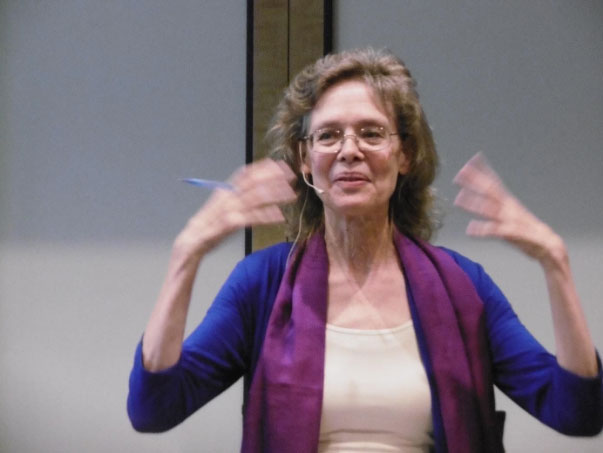
LB: Is the Wholeness Work still a form of NLP or does it open up a completely new field?
CA: I think both are true.
The Wholeness Work is NLP because it’s precise – it gives us specific steps that get a reliable outcome. It’s based on the structure of experience, not content. And it’s about experience, not concepts.
The Wholeness Work can also be considered a new field. This methodology guides us to a different stage of personal transformation. I’ve written an article explaining this11, and talk about it more extensively in the advanced Wholeness Courses. The goals and ways of working are quite different at this stage of consciousness/transformation.
When fully understood, the Wholeness Work isn’t just one method, but is a full “field.” It’s a collection of formats, based on the same underlying principles that are unique to Wholeness Work. When one understands all the principles and formats, the Wholeness Work can be a complete way of working.
It’s still important to be trained in classic NLP methods and/or other methods working at the earlier stages of transformation. Ideally a coach has the skills to assist a client through all the stages of transformation.
LB: Robert Dilts distinguished three “generations” of NLP (mind, body, systemic). Now, some people are speaking of a fourth generation of NLP and try to integrate spirituality in NLP work by modeling shamans, healers etc. How do you see your approach in this field?
CA: First I’d like to pose a friendly challenge to thinking about NLP in terms of “generations.” Generations can imply that whatever comes later is better. A 4th generation i-phone is going to be based on more advanced technology than a 3rd generation i-phone, for example. However, in NLP, we can’t assume that what’s called 3rd or 4th generation is an improvement. Sometimes it’s just NLP that’s watered-down. Lucas Derks has made this point in a previous interview, and I agree.
In NLP there has been a lot of interest in modeling shamans, healers, spiritual teachers, using NLP tools. It’s a worthy goal; however, most attempts to achieve this fall into one of two traps:
If we attempt to model spiritual experiences such as “awakening” using our existing NLP models, then we reduce the experience to something that fits into the categories we already have. Most spiritual modeling has been done this way.
However, a true “spiritual” experience doesn’t fit into classic NLP categories, and you can’t get there through classic NLP methods. True spiritual experience involves a letting go of filters and beliefs and experiencing “reality as it is.” If we use classic NLP methods, such as anchoring, or submodalities, or reframing, we will be adding or changing a filter. This can be useful but it isn’t the same thing.
Another “trap” is to just take an existing NLP method, add some fluffy spiritual-sounding words and beliefs, and call it “spiritual modeling.” This compromises the precision, and sensory-based experience that is the hallmark of NLP.
However, a true “spiritual” experience doesn’t fit into classic NLP categories, and you can’t get there through classic NLP methods. True spiritual experience involves a letting go of filters and beliefs and experiencing “reality as it is.” If we use classic NLP methods, such as anchoring, or submodalities, or reframing, we will be adding or changing a filter. This can be useful but it isn’t the same thing.
Wholeness Work doesn’t fall into either of those traps. It offers a model that’s new, for a key spiritual teaching. And the method itself is precise, specific, and experience-based: the hallmarks of NLP.
LB: Do you see the Wholeness Method still in the tradition of NLP, or do you see it more in the tradition of trance work and Milton H. Erickson or as a unique form of imaginative-meditative coaching and self-coaching?
CA: It is all of those things. It was strongly inspired by my personal experience with Milton Erickson in 1979. That was a profound experience that changed my life.
In studying Erickson’s life and work, I noticed that his innovations and amazing effectiveness emerged from the life difficulties he faced. He had extreme physical challenges. As a teen he contracted polio and was expected to die. Against the odds, he survived, but was paralyzed. Finding a way to walk again, and in later life finding ways to deal with ongoing pain, led Erickson to make discoveries that informed his work with others.
Similarly, I discovered the Wholeness Work because of a personal crisis. I was dealing with an overwhelming physical experience I didn’t understand. At the end of recovering from pneumonia, I began to experience what felt like a constant surging of electricity up my central column, that was so intense I couldn’t do much. Because I thought I was dying, I was willing to let go of everything I knew, and became open to something—anything—that might help me. In this state I had the openness to notice something that was actually new in the structure of my own experience. Without the degree of desperation I felt, I wouldn’t have been able to do that. That’s what led me to abandon all the old models I had, including NLP models, and notice something that was on a more fundamental level of experience. I wasn’t applying NLP models to something. I was just open to what else might be present/true.
LB: Some people might think, Wholeness Work is just another form of mindfulness training or focusing? What are the main differences?
CA: The main goal of Mindfulness is to help people be in the present moment. However, Mindfulness doesn’t give people an easy way to do that. In any given moment most of us are doing some combination of reacting to what’s happening in the present, thinking about the past and/or anticipating the future.
If we just tell someone “don’t do that, just be in the present moment,” it creates inner conflict. In contrast, the Wholeness Work gives us a precise and easy way to actually be present in the moment. One key to this is that the Wholeness Work shows us how to notice the everyday sense of “ego,” and invite this to dissolve. The steps are in the book—it’s laid out so anyone can do it.
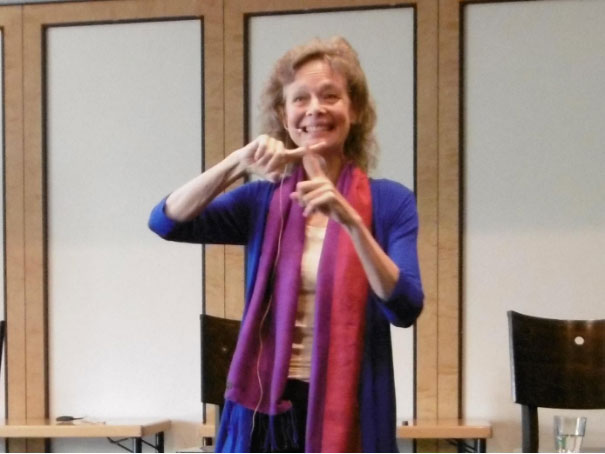
If you try out the complete method that’s in the book, you’ll notice quite a few other differences from Mindfulness. These differences are why the Wholeness Work can deliver what mindfulness is attempting to do, in a way that’s easier, more reliable, and more complete.
With focusing, people are guided to notice sensation. Wholeness Work includes this, but it goes much farther. Wholeness work opens an additional inner world to us. We actually discover the inner “structures of the psyche” that create the body sensations that can give us stress.
LB: Can this state be approached by different methods as well – let’s say by reframing and belief changes, by re-imprinting, by EMI or by trance work?
CA: Each of the above methods can be very useful. However, the Wholeness Work takes us to a different stage of transformation than we can get to systematically with the above methods.
LB: Many years before you developed the Wholeness Work, you developed Core Transformation, in an attempt to reestablish a profound feeling of being okay, you once experienced in a seminar with Milton H. Erickson. Is Wholeness Work a form of Core Transformation 2.0 or what are the main differences between both methods?
CA: My experience with Milton Erickson influenced both methods, yet the methodologies are very different. One doesn’t build on the other.
Core Transformation uses our life problems as a doorway to a profound experience such as “peace” “presence” “OKness” or even “oneness.” Through the process, these “Core States of being” naturally transform the life problem we began with.
The Wholeness Work works in the same direction as Core Transformation, yet it’s completely different. It is simpler and more direct. It gives us the ability to find and dissolve the everyday sense of “ego,” plus transform inner coping mechanisms and a lot more.
LB: Is it helpful or necessary for the practitioner of Wholeness Work to know the Core Transformation Process? In which ways could or should you combine both methods?
CA: Either method is a stand-alone methodology, and doesn’t require the other to be effective.
However, I consider both to be essential methods to know well, if one is working with the deeper levels of consciousness. Some things Core Transformation can do better. For other things the Wholeness Work is better. For clients wanting to have the best quality of life possible, I recommend both. One of our trainers says, “I think having both methods to use with my clients is more than twice as good as just having one or the other.”
LB: What is the main target group of your book on the Wholeness Method? Does it provide a theoretical introduction, a back-up for those who attended already Wholeness workshops or can it be helpful for readers without any experiences in the fields of mindfulness training, meditation or spirituality?
CA: I wrote the book so that it can be accessible to anyone and everyone. It walks the reader through everything he/she needs to know, to experience the Wholeness Work for him/herself. I’ve been gratified that even people with no prior experience with NLP or any kind of changework or meditation have emailed me saying how much the book has changed their lives. The book is also a great resource for therapists and coaches. It shows coaches how to guide their own clients through the process, and includes material I don’t have time to go into during the trainings.
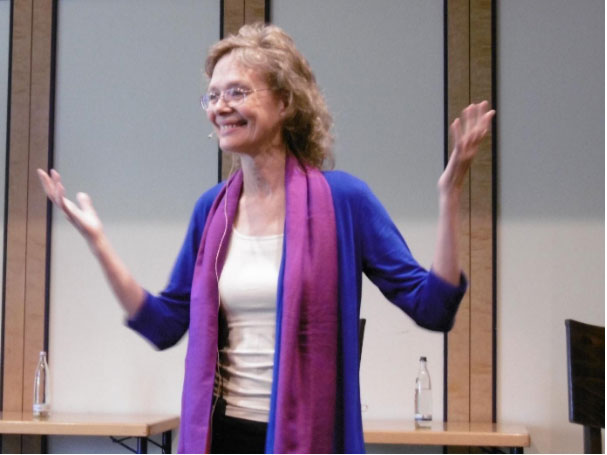
LB: If you want to use the Wholeness Method for a daily meditative routine: what distinguishes this approach from other forms of meditation? Does it require a background of meditation experience, or change the meditation practice you have?
CA: Many people who have had difficulty doing standard meditation or who have never tried it have found Wholeness Work to be surprisingly possible and even simple. Many who have been using other meditation practices for decades have reported that Wholeness Work helps them reach a meditative state more quickly and easily. One thing that’s unique is that each time we’re doing Wholeness Work meditation, we’re transforming our limitations. It’s much more than just a restful state—We literally can keep evolving with it.
I’ve been using the Wholeness Work as a daily life practice for quite a few years. That’s the way to get the most benefit. It’s made a positive difference in all areas of my life, and I continue using it because I keep noticing more benefits.
LB: In your book on Wholeness Work, you stress the gentleness of the method. What does it mean in this context?
CA: The Wholeness Work gives us a way to include and embrace all of our experience. We don’t need to override anything, overcome anything, or push anything aside. And we don’t force anything. People experience this as a kindness and gentleness.
With many methods people can feel a subtle need to “go along with” the process to be a good client. There isn’t any such need with the Wholeness Work because it really can meet whatever we’re actually experiencing in each moment. All of our thoughts and feelings.
LB: You talk about how you can use Wholeness Work on a wide range of different experiences, concerns and issues, and even as a daily meditative routine or as a way of finding and deepening spirituality. According to your experience, in which ways is it most helpful for beginners?
CA: I think most people will find it works best to begin by using the Wholeness Work with daily “hot buttons” or “stress.” If you find yourself reacting emotionally to something, or tensing up, these are great places to begin. The book walks you through how to do this.
LB: What were some of the most surprising results you heard of?
CA: Before sharing the surprising results, I want to remind you of the typical results. Most people find the Wholeness Work becomes a reliable “friend” that can meet whatever curve balls life may throw our way. Any “stress” becomes the doorway to a deep relaxation and wellbeing.
Some of the most surprising results have been times when people experience something that sounds like the spiritual accounts of awakening. They experience waves of something indescribable pouring through their system, or strong vibrations along the central column, or a bursting of warmth from the heart area, etc.
I believe it isn’t useful to have this as a goal. With the Wholeness Work, each of us experiences the transformations in the way that fits for us and for our mind/body system. For some of us this may be dramatic, and for many of us this is more gentle and gradual.
It’s also important to realize that it’s possible for a method to produce dramatic experiences in the moment, without actually changing anything. It’s like going on a roller coaster ride, but then you get off and you’re still the same person.
What matters is what remains after the system has settled. With the Wholeness Work, we are systematically shifting the structure of our psyche, so the shifts that happen are enduring.
LB: In 2018, you published an introductory book in English which is now (2020) available in German translation as well. Are there further, more advanced forms and fields of application, you are working on currently?
CA: Yes, there’s much more to the Wholeness Work than I could put into one book.
However, the Wholeness book is the best place to start. It will teach you the first two Wholeness methods in an easy-to-absorb way. Then, if you like it, the good news is that there’s much more. Since the Wholeness Work is at this point almost its own field, there are many additional methods and principles that I teach in the advanced Wholeness courses. We are also investigating applications to many specific areas including health.
There is also a group in Germany that has been working closely with me for quite a few years, that is now offering courses and mentorship.
LB: Thank you for the interview.
Dr. Ludger Brüning has served as Vice president of the European Coaching Association (ECA) and as member of the Executive Board of the German Association of NLP (DVNLP). He is a certified business trainer and life coach.
About the work of Connirae Andreas
Connirae Andreas has been one of the best-known and most innovative trainers in the field of personal development for over 40 years. Many are familiar with her work on NLP, hypnotherapy and her own approaches. In 1977, while still a graduate student of clinical psychology, she and her partner, the Gestalt therapist John O. Stevens, who changed his name into Steve Andreas after their marriage, came into contact with the new method of NLP. Based on workshops by Richard Bandler and John Grinder, Connirae and Steve edited the first clear and practically comprehensible books on the new method and thus contributed significantly to the popularity of the new approach. „Frogs into Princes“, the first of these books, was published in 1979, one year before the first coherent theoretical foundation of NLP came out1. Half a million copies of their workshop book would be sold. Others, like Trance-Formations and Re-Framing, followed. Connirae and Steve remained publishers, sponsors, authors, therapists, trainers and critical companions of NLP. Together and independently from each other, they developed new formats but also completely new approaches. They pioneered the field of Timeline work2, created methods like the Grief Relief process3 and Aligning Perceptual Positions4, and founded the Eye Movement Integration (EMI), which offers a more complex approach than EMDR5. Connirae also developed the „naturally slender eating strategy“6 and the „engaging your body’s ability to heal“ process7.“ Similar to her husband, who died in 2018, she remained interested in therapeutic issues. She is on the advisory board to the Research and Recognition Project’s training team, which amongst other things explores effective methods of treating PTSD in veterans in the US and UK.Connirae’s best-known work is probably the Core Transformation Process, a structured, profound change process that she developed to regain the feeling of deep wellbeing and profound „OKness“ she had felt after a workshop with Milton H. Erickson, in 1979.8
Caused by a very serious illness, she went on the search again. Building on her own personal experiences and her work with others, she developed a new approach, the Wholeness Work, which she presented at the DVNLP’s Future Tools workshop, in Germany in 2017. An introductory book appeared in 2018, first in English9, and now (2020), in German translation10 as well. Dr. Ludger Brüning spoke with Dr. Connirae Andreas on the background and the developing of her new method.
Footnotes
1. Neuro-Linguistic Programming, Vol. I. The Structure of Subjective Experience, written by Robert Dilts, John Grinder, Richard Bandler, and Judith DeLozier, was published by Meta Publications in 1980.
2. The structural timeline work was the first form of timeline work developed. It was developed and taught by Steve and Connirae since 1984 and uses submodalities to change the structure of timelines. This allows clients to find a new relationship to all their experiences in time. In 1988, Wyatt Woodsmall and Tad James published their concept in Time Line Therapy and the Basis of Personality. It popularized timeline work. However, it uses a different approach utilizing existing timelines to change memories of single events similar to Richard Bandler‘s Decision Destroyer format. According to Connirae, Wyatt attended one of Steve’s early conference presentations on timeline work (June, 1985). Connirae and Steve published an article on the history of ideas and the development of timeline works with its different approaches in VAK International NLP Newsletter, in 1991. (Andreas, Steve and Connirae: A Brief History of Timelines. http://www.steveandreas.com/Articles/timelines.html (20.06.2020)). They published their own form of timeline work in Change your Mind – and keep the Change (1987) and in Heart of the Mind (1989) which gives also a description of the Decision Destroyer format. Both books were translated into German (Gewußt wie. Arbeit mit Submodalitäten und weitere NLP-Interventionen nach Maß. Paderborn: Junfermann (1988), Mit Herz und Verstand. NLP für alle Fälle. Paderborn: Junfermann (1992)).
3. The Grief Relief process was developed by Connirae and Steve Andreas in the mid to late 1980s and published in Heart of the Mind (Mit Herz und Verstand). In 2002, Steve and Connirae wrote an article on the process (Resolving Grief http://www.steveandreas.com/Articles/grief02.html (22.06.2020)).
4. Aligning Perceptual Positions was developed by Connirae Andreas, in 1989. It offers a precise way to maximize our ability to utilize each perceptual position and became a part of the three day Core Transformation trainings. She and her sister Tamara published an article on the format in Anchor Point, in 1991. (Aligning Perceptual Positions. A New Distinction in NLP http://www.steveandreas.com/Articles/comaligning.html (22.06.2020)).
5. Eye Movement Integration (EMI) was developed by Steve and Connirae Andreas at about the same time as Francine Shapiro’s method, in the late 1980s. Danie Beaulieu learned about EMI when Steve gave a demonstration at the Conference on Ericksonian Approaches to Brief Therapy in Orlando, Florida, in 1993. She put further research in it, partially in cooperation with Steve and Connirae, and established EMI as a form of therapy. (Beaulieu, Danie: Eye Movement Integration Therapy. An introduction to the treatment of traumatic and distressing memories, page [2]: „Origins and modifications“ (http://www.academieimpact.com/pdf/EMI_article.pdf (22.06.2020)).
6. The method is described in Heart of the Mind, chapter 12.
7. The process is described in Heart of the Mind, chapter 20.
8. The Core Transformation Process was developed by Connirae Andreas, in 1989. Later, she gave a detailed description of the development and its background (http://www.coretransformation.org/the-core-transformation-story-how-the-process-came-to-be/). It is a method of gentle and profound transformation through accessing states of Peace, Oneness, and Presence by simple, structured steps. First large trainings took place in 1990. Based on the experiences in their trainings, Connirae and her sister Tamara published Core Transformation. Reaching the wellspring within, in 1994. A new print edition was published by Real People Press, in 2015 (ISBN-13: 9780911226331). A first German edition came out by Junfermann (Paderborn), in 1995 (Der Weg zur inneren Quelle. Core-Transformation in der Praxis. Neue Dimensionen des NLP. ISBN-13: 978-3873871403).
9. Andreas, Connirae: Coming to Wholeness. How to Awaken and Live with Ease. Boulder (Colorado/USA): Real People Press, 2018. ISBN-13: 9780911226515.
10. Andreas, Connirae: Auf dem Weg zur Ganzheit. Mit der Wholeness-Methode zur persönlichen Transformation. Paderborn: Junfermann 2020. ISBN: 978-3749500727.
11. https://www.thewholenesswork.org/stages-of-transformation-accessing-deeper-levels-of-change/ (25.06.2020).
Share this post
©2016 The Wholeness Work and Connirae Andreas

